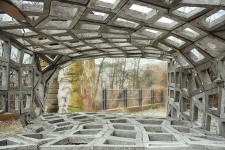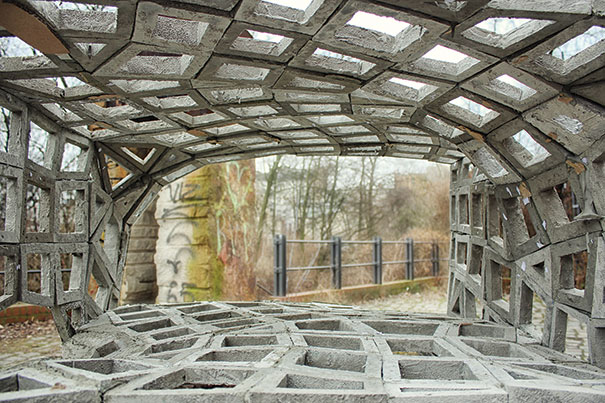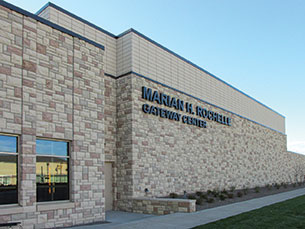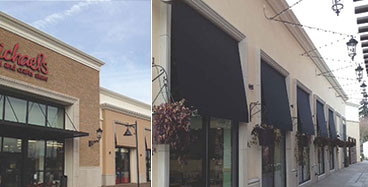August 2015
Manufactured Stone
By Evan Rawn
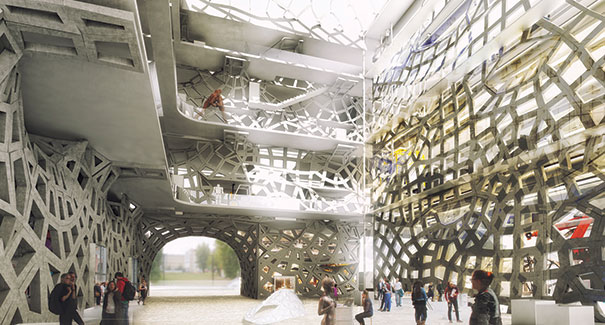 When one hears the term masonry architecture, digital fabrication and automated construction processes are probably not the first ideas that come to mind. By its very nature, the architecture produced with stone masonry is often heavy, massive and incorporates less natural light than alternative methods. However, with their research proposal for “Smart Masonry,” ZAarchitects is proposing to change masonry buildings as we know them and open opportunities for digital fabrication techniques in stone and other previously antiquated materials.
When one hears the term masonry architecture, digital fabrication and automated construction processes are probably not the first ideas that come to mind. By its very nature, the architecture produced with stone masonry is often heavy, massive and incorporates less natural light than alternative methods. However, with their research proposal for “Smart Masonry,” ZAarchitects is proposing to change masonry buildings as we know them and open opportunities for digital fabrication techniques in stone and other previously antiquated materials.
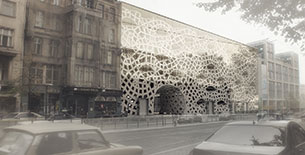 Designers Dmytro Zhuikov and Arina Agieieva derived the foundations and construction methods of their new structural system from the techniques used in traditional masonry buildings. As a construction method that has its roots in ancient history, the vast array of masonry building precedents offer contemporary architects a wealth of information to draw upon.
Designers Dmytro Zhuikov and Arina Agieieva derived the foundations and construction methods of their new structural system from the techniques used in traditional masonry buildings. As a construction method that has its roots in ancient history, the vast array of masonry building precedents offer contemporary architects a wealth of information to draw upon.
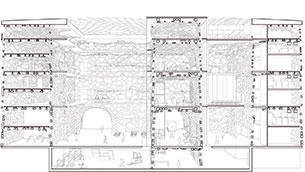 One of the most significant challenges in designing masonry structures throughout history has been ensuring structural loading requirements and minimizing building mass wherever possible to encourage the flow of light and air. Because modern technologies allow us to optimize and minimize dead weight, the structural skeleton of Smart Masonry is incredibly light. Additionally, complex geometries can be achieved through the use of robotic construction techniques, ensuring that each element can be replicated with the same precision each time.
One of the most significant challenges in designing masonry structures throughout history has been ensuring structural loading requirements and minimizing building mass wherever possible to encourage the flow of light and air. Because modern technologies allow us to optimize and minimize dead weight, the structural skeleton of Smart Masonry is incredibly light. Additionally, complex geometries can be achieved through the use of robotic construction techniques, ensuring that each element can be replicated with the same precision each time.
Case Study |
The ‘Wow’ FactorArriscraft offers exterior cladding for the University of Wyoming’s Marian H. Rochelle Gateway Center
The Gateway Center fuses the university’s brand qualities with a technological infrastructure. Designed by Pappas & Pappas Architects and DLR Group, the center combines the traditional with the contemporary, offering a visual venue that incorporates welcome areas, offices, ballrooms, conference rooms and exhibits. The building’s exterior needed an impact – a wow factor. Serving as a “front door” of sorts for the university, two vital requirements challenged the center’s designers: incorporating the historical sandstone as the primary building element and utilizing the UW brand colors in a visual and lasting way. From 1886 through the early-1970s, the university used the same sandstone quarried locally near Laramie, which became a signature look. When the quarry closed, a natural stone supply was difficult to source, given inventory and color limitations. Instead, UW opted for a manufactured building stone that mimics natural sandstone in appearance and performance. Since 2003, the manufacturer of that product, Arriscraft, has supplied a custom color blend as the signature sandstone for UW buildings. tone supplier BrickStone Inc. and project leader Chet Lockard, Project Guide Services, collaborated with UW to find not only a sandstone match, but also a palette that was a perfect representation of the UW brand. Careful to continue a similar masonry pattern as was in existing buildings, Toby Marlatt, VP of marketing and communications at UW, helped create a four-inch module pattern using Renaissance Masonry Units in Garnet, Suede and Café colors in a rocked finish. The warm tan, red and brown tones combine to both brand the building and deliver the strong statement that the university was after. The Renaissance stone was continued throughout the interior of the Gateway Center, maintaining the rustic feel and setting a fundamental color palette for the interior design. In the interior atrium, ARRIS.stack thin stone covers a three-story fireplace – a durable choice for the key visual feature. For more information on Arriscraft, visit www.arriscraft.com. |
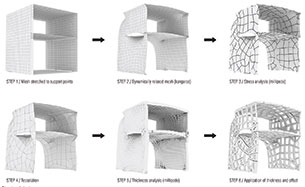 This proposed method is linked to the program and location of the building-makers center in Berlin. The machinery, which will be used to construct the building, will later be preserved at its core, serving as a reminder of the building’s origin and addressing its present functions.
This proposed method is linked to the program and location of the building-makers center in Berlin. The machinery, which will be used to construct the building, will later be preserved at its core, serving as a reminder of the building’s origin and addressing its present functions.
Conceptualized as a seamless mesh, overlapping and wrapping elements replace walls, columns and beams. Saving on material and costs, the entire area of the building is designed as a “minimal surface” whose stress pattern is optimized and materialized as a load-bearing pattern.
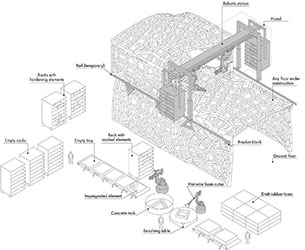 Mixing advantages of 3D printing and large prefabricated elements, the concept seeks to maximize construction efficiency, further reducing costs and enhancing precision. A robotic arm construction station enables the production of complex geometries on each floor. Compared to traditional methods, this robotic arm method is more compact and reduces labor costs throughout the entirety of the construction process. Additionally, it is much faster than 3D printing and can produce complex digital forms in a fraction of the time.
Mixing advantages of 3D printing and large prefabricated elements, the concept seeks to maximize construction efficiency, further reducing costs and enhancing precision. A robotic arm construction station enables the production of complex geometries on each floor. Compared to traditional methods, this robotic arm method is more compact and reduces labor costs throughout the entirety of the construction process. Additionally, it is much faster than 3D printing and can produce complex digital forms in a fraction of the time.
The overall form of the structure is derived by beginning with basic geometries and manipulating them according to structural efficiency. This is a technique known as “positive casting,” used to conserve resources and to produce the design’s unique elements and geometries.
For more information on ZAarchitects, visit http://www.zaarchitects.com/en. This article originally appeared on ArchDaily.com.
Manufactured Stone |
New Perspective from the Pacific NorthwestMidwest Cast Stone gets high marks from a Pacific Northwest masonry giant.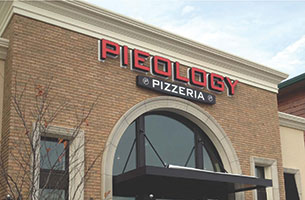 J&S Masonry, a mason contractor operating in the Pacific Northwest, has a range of project experience – from schools to hospitals and stadiums. The company says high quality and reasonable prices give Midwest Cast Stone an edge in estimating and project success. Ryan Baker, VP of J&S Masonry, looks at masonry materials in a slightly different way from most contracting executives. It’s part of his job to source them, buy them and ship them. But actually, Baker began his career manufacturing masonry materials. Baker worked at a plant through high school and college making concrete masonry units (CMU). It was hard work, but it exposed him to an industry that has turned into a rewarding 17-year career with J&S Masonry. “At first, it was simply a good way to earn money in high school and college,” Baker says, “but then, I saw it could be a pretty exciting field. We’ve worked on some amazing projects over the years, and I’ve had the chance to meet a lot of great people.” Baker says he counts Midwest Cast Stone’s Tom Waldschmidt as one of these people. During the last few years, Baker and Waldschmidt have worked together on several projects. Based in Kansas City, Kan., Midwest Cast Stone and J&S Masonry work together seamlessly, distance being a non-issue.
Baker says the products make the trip just fine, and the pricing is in line – often more competitive than local suppliers. “Midwest Cast Stone seems to have a molding process that creates more uniformity and less cracking,” Baker says. “The colors are always very consistent as well.” With about 125 employees in the field at any given time, stone variations, delays or damaged materials can be costly. Baker says the projects, which include a Nyberg Rivers (Tualatin, Ore.) retail project and Snoqualmie Valley Hospital (Washington), involved complex scheduling. “The communication and planning at Midwest Cast Stone are excellent, and we can trust them.” Earned businessOver the years, Baker has held a variety of roles at J&S Masonry. Today, his primary responsibilities include estimating and business development. While the competitive pricing at Midwest Cast Stone is an advantage, the relationship has other tangible benefits. “They’ve got a good system for quoting that is clear and accurate,” says Baker. “They are very fast and their piece counts are spot on. We’ve got a lot of confidence in their estimates, and we can understand them easily.” Baker adds that if a project plan calls for an extra piece or replacements are necessary, Midwest Cast Stone proactively provides extra pieces for emergencies or can offer them within a few days of need, to keeps things moving. “It doesn’t matter that Midwest Cast Stone is 2,000 miles away,” says Baker. “We’ve learned that we can count on them for products with better color, unifor¬mity, sizing options and pricing. The only way to earn a preferred supplier reputation with us is to earn it, and they’ve done it and continue to do it.” For more information on Midwest Cast Stone, visit www.MidwestCastStone.com. |
